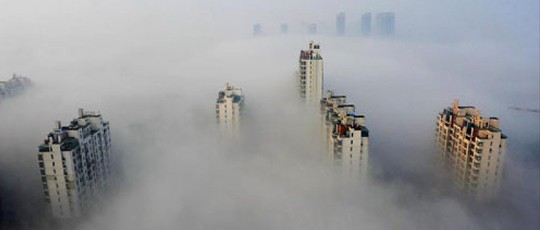China, Australia: What Lies Ahead?
It was good news in the beginning of June when HSBC announced that Chinese manufacturing lifted for May. Miners in Australia must have collectively sighed in relief, as the prospects of the decline in the mining sector seemed to ease. While this data shows a four-month high, the PMI had deteriorated in each month of 2014 so far and shouldn’t be taken as a good sign. In fact, it demonstrates the current struggle within China of a government trying to address competing demands.
China Manufacturing
As the graph below shows the Chinese manufacturing sector has been in contraction since 2011 with only short increases in growth over periods in 2012 and 2013. This is reflective of struggling global demand since the GFC and China’s inability to coax significant domestic consumption.

So far this decline in manufacturing activity has not materially affected Australia. But this does not mean it will not into the future. There are a number of things happening in China that could affect this. Strangely enough it has to do with smog and shadows.
Exertion cautioned
China has a serious problem with pollution. The World Health Organisation deems any reading of the air quality index above 25 unsafe. Readings above 300 are said to produce serious aggravation of heart or lung disease and even premature death. At such levels it is recommended that people avoid outdoor exertion altogether! Going by the image below, the majority of urban Chinese are breathing air that is at dangerous levels. No wonder, President Xi Jinping has started a ‘war on pollution’. Lest there be a war on him.

Here is the catch however. To tackle pollution requires the dilution of China’s already weakening growth. Societe General shows that GDP will slow 0.35 % cumulatively from 2014-2017 because of the government’s current minimal air pollution mitigation efforts. They found further that the more polluted the region, the greater the slowdown. This is of concern to all of us because a hit to China’s growth without question will be a hit to Australian mining exports and thus Australian growth.
Coming out of the shadows
On top of tackling pollution the Chinese government have also sought to suppress the burgeoning shadow banking sector. Whispers about the size the sector have grown in recent months. Once such whispers were duly hushed by the central government, but now it seems all but inescapable as shadow banking alone is estimated at $US 5 trillion.
As the graph below shows non-bank lenders have been expanding credit at a rapid pace, increasing on average by 47% since 2008. Looked at in another way, non-bank loans accounted for 11% of total loans in 2008 and more than doubled to 24% by 2013.
Debt from Banks and Other Lenders (2008-2013)

The size of the shadow-banking sector is of concern to China and in extension Australia because of where the money is going and how it will be repaid. It has been reported that many of the firms borrowing from the shadows are small to medium businesses as well as local councils who are unable to service their loans. Data from the Chinese Audit office found that increasingly local councils are relying on land sales and new debt to finance old debt. This never lasts very long.
Addressing the shadow-banking sector is a mammoth task because of the interrelation between the shadows and the traditional banking sector in China, as the graphic below shows.

This is awkward for the government because stamping out such activity requires limiting credit expansion to banks but, and here it is important for Australia, this will have the effect of slowing growth. However not tightening credit growth will enable more Ponzi-like borrowing and broaden risks to the economy.
The Chinese government has not been paralysed by this apparent dichotomy of choices and is developing directed solutions like ‘suspending’ credit to property developers; tightening regulation on trust companies; and directing commercial banks to limit interbank borrowing. All in the hope of quelling further growth of the shadow-banking sector. Time will tell if it works.
What does this mean for Australia?
The best way to understand how China’s challenges will affect Australia is by looking at data on exports. As the graph below shows, China has been the predominate destination for Australian exports since the sharp decline in exports to Japan in 2009. Chinese hunger for Australian exports has been seemingly insatiable since 2012 and towers over even the next closest trading partner. Basically, our exports to China are unrivalled.
Australian Exports by Destination
In the national accounts, net exports contributed 1.4 % to real GDP growth — its largest contribution in five years. The majority of this went to China and the majority sent to China is from the mining sector. By comparison, the domestic economy performed relatively poorly with gross national expenditure (which excludes trade), declining by 0.3 % in the March quarter.
If Australia wants to continue its long history of prosperity, we would be wise to open new lines of trade outside the mining sector and further diversify major trading partners.
Conclusion
Australia’s reliance on China has not created any problems so far. Recent speculation regarding Chinese property and the economy in general poses risks that are quite hard not to ignore. Needless to say, if the Chinese economy does sour- by addressing pollution or stamping out the shadows- Australia’s trade balance will take a significant hit and the Australian economy will be left with few thriving sectors. What makes matters worse is that there is limited monetary stimulus available to deal with such a blow. No point waiting. We best get prepared.




